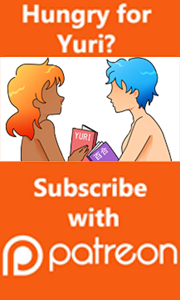 Otherside Picnic, Volume 5 begins in the middle of a story and for the rest of the book, that is pretty much where we stay. A scenario occurs, but it does not feel particularly resolved by the end of the section when it stops. Nonetheless, this novel covers a fair amount of ground, much the same way Sorawo and Toriko travel the UBL – a mapping of the story, rather than the story itself.
Otherside Picnic, Volume 5 begins in the middle of a story and for the rest of the book, that is pretty much where we stay. A scenario occurs, but it does not feel particularly resolved by the end of the section when it stops. Nonetheless, this novel covers a fair amount of ground, much the same way Sorawo and Toriko travel the UBL – a mapping of the story, rather than the story itself.
The first scenario begins with the continuation of the Love Hotel Girl’s Party set-up from the end of Volume 4. Clearly, in the real world a love hotel girl’s party is meant as a bachlorette /stag party for women. One might expect alcohol and a male stripper and other straight-women misbehaving nonsense. But because Toriko won’t say things and Sorawo was never socialized normally and will avoid all things unless they are said, and often even then, the two of them are joined by Akari, Natsumi and Kozakura. Then…something happens. What happens is interesting, but not for the thing itself. I’ll come back to this in a second.
Before I forget, I want to note that Miyazawa is losing his grasp on Kozakura. She started out as a point of contact for DS, but at this point is merely a grumpy, scared nobody in the story. I feel bad for her.
Following this was definitely the strongest section as Sorawo tracks down Toriko at university to have some stuff out with her. Toriko is, understandably, feeling endlessly rejected by Sorawo. Sorawo even understands that, but just is not capable of returning the feelings. When Toriko accidentally pushes Sorawo into interstitial space, Sorawo finds herself understanding, finally, what she has not been able to look at head-on. Toriko is in love with her. She acknowledges this – and recognizes that it makes her panic.
The third scenario puts Sorawo back in her happy place – investigating the Otherside with Toriko. Planning, traveling, thinking about getting new equipment…this is what she loves. And she loves doing it with Toriko. This is her love language. So, when they meet another person, how will Sorawo react? Not at all the way you’d expect. Todate doesn’t need their help. She and her dog, Hana, are suited to one another, as Sorawo and Toriko are. Todate teaches the two how to spot animals in this world. Her skills add a new tool to their bag and the hunt shows them that the Otherside may well have a logic of it’s own, if the animals have evolved to not be driven mad by it.
By this time, Sorawo and Toriko are starting to think about how lucky they were when they first met. And they are beginning to understand that the UBL has clearly changed them, and not just physically. This becomes part of the conversation in the fourth scenario as the story circles back to the first person the met on the Otherside. Abbarato comes back into the story like a reflection, through what may or may not be his missing wife. Sorawo admit she was always looking for proof of the existence of the paranormal in stories and now, Sorawo’s eye and Toriko’s hand are actual relics of that very thing…but what does any of it mean?
In this final scenario, the two encounter a feral child and again, this triggers Sorawo’s memory of her own, entirely abnormal childhood. This, along with several conversations about disassociative behavior is very clearly meant to remind us that Sorawo is not *just* being dense about her emotions. She had a shocklingly traumatic upbringing and, as I say, has never been socialized. This was pounded on us so many ways in this novel, I wonder if the fandom was being kinda dense themselves and Miyazawa felt he had to be like, “Dudes. WTF? Do you not remember this important thing?”
Which brings me to my point. Her family was part of a cult, she’s always been obsessed by the paranormal. Even Sorawo can see that the Otherside seems to focus on her, but what if it’s not that the Otherside focuses on her, but that she is, in a sense, creating it for us. At the very least, she is an interpreter. A phenomenon occurs and, with her experience of the paranormal, Sorawo tells us what to understand it as. Because of this, we have a way to comprehend those experiences. In a sense, she is telling us how to not go mad. And, in that sense, she is creating the Otherside for us. We’ve seen what it does to people with no point of reference. We can avoid that fate, because Sorawo tells us what we see.
There are two more things I want to note. One was the appearance of more typical Yokai and Tales of Tono in this volume. Up to now, the stories have been rooted in modern netlore, most specifically scary stories on 2chan. Tono Monogatari is a 1910 manuscript by Yanagata Kunio and Sasaki Kizen, which collected a series of folklore and Yokai stories from a town that, to this day, considers itself the home of the strange and paranormal in Japan. Famously, Gegege no Kitarou creator Mizuki Shigeru did a comic of this – which was translated into English by Zack Davisson and published by Drawn & Quarterly. The chapter with Todate is based on a tale from Tono.
And I hope you all noticed the traditional Yokai that appeared at the beginning of the story! Kuchisake–onna is a well-known tale that involves a woman with a face that has split mouth. She is known to ask strangers if she is beautiful…and if they say, no proceed to kill them. I was quite pleased at this scene. We’re big fans of contemporary Yokai here and the use of the story was perfectly done.
The Otherside is, in this story, a reflection, a sight out of the corner of one’s eyes, a unfocused thing you sometimes see. As my old martial arts teacher used to say, it’s all the “Yin” side. We can perceive it and some of us interact with it. It inhabits the same space we are in, at the same time. The use of mirrors and reflections really highlight that in this book.
Lastly, but not at all least, I would like to note the art. The series began with blandly moe-stye art that I did not think accurately portrayed the characters in the least. But now, we’re getting gorgeous, evocative woodblock print-like black and white images that are vastly superior. These images are so much better, I had to check that we had the same artist. So yay for shirakaba being able to give us art that suits the tone and feel of the story much more suitably than one more shitty moe pinup. The art in this book was outstanding.
The book ends a bit abruptly, which makes it feel like a set-up for the next volume. Fortunately Otherside Picnic, Volume 6 will be hitting your electronic devices in November, so there’s not too long to wait. Based on the synopsis however, we’re going to get more questions than answers…again. But that’s why we read this series, after all. ^_^
Ratings:
Art – 9
Story – 9
Character – 9
Service – 7 – Love hotel and stupid
Yuri – 8
Overall – 9
Otherside Picnic weaves contemporary folklore, psychological horror and romance into a compelling adventure.
![]() When I tell you that Girls Kingdom, Volume 4 is worth reading, please understand that I am 100% aware of what I am saying. The series is, thus far, a ridiculous concoction of overblown Yuri tropes seen on a jumbotron screen of Light Novel excess. It’s also kind of fun. In Volume 4, it is both entirely, gobsmackingly, batty and much more clever than it has any right to be…and then it is…charming. Imagine that I write that sentence in equal parts awe, amazement, frustration and maniacal giggling.
When I tell you that Girls Kingdom, Volume 4 is worth reading, please understand that I am 100% aware of what I am saying. The series is, thus far, a ridiculous concoction of overblown Yuri tropes seen on a jumbotron screen of Light Novel excess. It’s also kind of fun. In Volume 4, it is both entirely, gobsmackingly, batty and much more clever than it has any right to be…and then it is…charming. Imagine that I write that sentence in equal parts awe, amazement, frustration and maniacal giggling.

